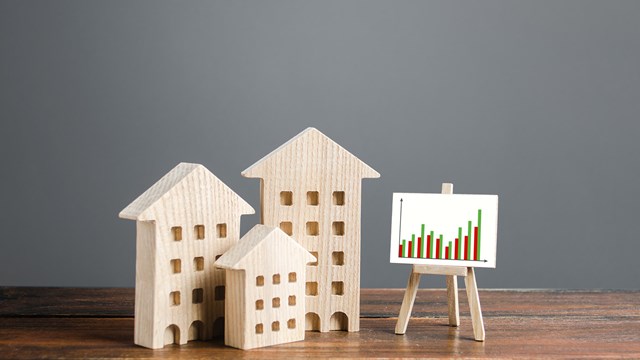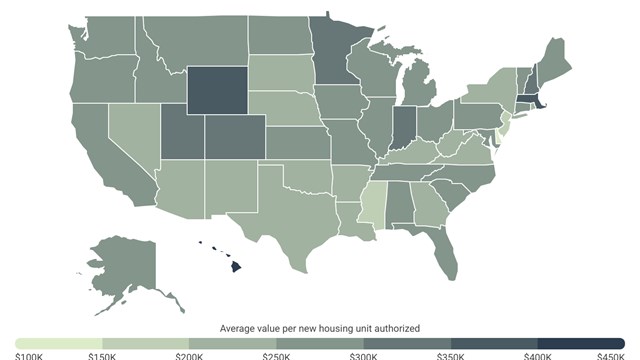While the year 2002 was marked by the economic ups and downs of a turbulent stock market, the lingering effects of September 11th and fears over new terrorist attacks and impending war in the Middle East, the real estate market and the construction industry showed remarkable stability.
In fact, average sales prices of some of New York's prime residential real estate remained unchanged or dipped only slightly, according to the Corcoran Group. The Year End 2002 Corcoran Report notes that marketwide, the average sales price of New York City's co-ops did not change while condo prices dropped an average of three percent. Sales prices in Manhattan even rose in all segments of the market, except for the high-end luxury apartments, where prices of co-ops tailed off seven percent, and condos, five percent.
The average sales price for co-op apartments in 2002 was $700,000; compared to $697,000 in 2001. The average sales price of a typical condo was $1.037 million compared to $1.069 million in 2001, the report says. The average sales price of a studio apartment was $218,000 in 2002, up six percent from the $205,000 recorded in 2001. A one-bedroom rose to $400,000 from $372,000 reported in 2001, an eight percent increase while a two-bedroom was priced at $854,000 compared to $802,000 in 2001, a six percent increase. The average sales price of a three-bedroom co-op stood at $2.117 million, but that is seven percent less than the $2.279 million recorded in 2001, according to the Corcoran Group. Among condos, the average price of a studio apartment was $332,000, 12 percent higher than the $296,000 recorded in 2001; one bedrooms were $529,000 compared to $526,000, an increase of one percent; two-bedrooms, $1.110 million compared to $1.049 million in 2001, a jump of six percent; and the price of a three-bedroom condo dropped five percent, going from $2.462 million in 2001 to $2.330 million in 2002.
And, according to the New York Building Congress (NYBC), the construction outlook is a lot brighter than one would expect. "Construction activity in New York is expected to remain relatively stable throughout 2005 and potentially beyond, based on an analysis of capital budgets, private sector development plans and other indications. There is, however, a considerable level of uncertainty about the future, given current market forces and projected budget gaps in Albany and City Hall," the NYBC report says.
Industry experts are optimistic that future construction activity should continue near record levels as long as there is the appropriate political will to proceed with vital capital projects in the commercial and residential sectors. The big question, however, says the NYBC, is the availability of the necessary financing to move projects from the planning to construction phases.
The construction industry was hurt by the September 11th attacks, losing a valuable part of its workforce, and the weakening economy seemingly has resulted in less than full employment in the construction trades. But, NYBC continues, "Despite a weakening economy, growing budget deficits and a high degree of uncertainty stemming from last year's terrorist attack, construction spending and employment is holding up remarkably well.
"In fact, with 2002 construction activity remaining at near record levels, the industry has been countering the region's downturn and helping to buoy the local economy," the report goes on to say.
According to the NYBC, construction spending decreased from record levels recorded in 2001 by about 25 percent. However, it is expected to reach $1.7 billion in 2002, which they claim is equivalent to 12,300 units that were built throughout all of New York City - including subsidized and unsubsidized housing. Current spending levels are more than twice that of 1995, in which all residential construction totaled approximately 5,135 units, according to the NYBC.
Residential construction spiked from 1999-2001 because many developers sought to take advantage of zoning changes along Avenue of the Americas in Midtown Manhattan. The NYBC says that residential construction is expected to remain through 2005 in the $1.7-$1.8 billion range, which is equivalent to about 12,000 units.
Non-residential construction, on the other hand, which includes private commercial and institutional development is expected to reach $4.3 billion in 2003, (which is equivalent to 13.5 million square feet of development space). That is slightly less than the $4.6 billion that was spent in 2001 (equivalent to 14.4 million square feet) but much higher than the $2.75 billion/5.4 million square feet of development) reported in the mid-1990s, according to NYBC.
Since 1990, new residential construction of all types of housing, including subsidized and non-subsidized development in the five boroughs of New York City, has averaged close to 10,000 units, ranging from about 5,579 units in 1993 to 13,231units in 2001, according to figures compiled by the Real Estate Board of New York (REBNY) and based on statistics from the New York City Department of City Planning and U.S. Census housing information. According to Yale Robbins, Inc., historically, new unsubsidized residential construction in Manhattan is less than 3,500 units per year.
The rebuilding of Lower Manhattan aside, there are still considerable construction projects in the pipeline that will impact the marketplace through 2010. And if New York City is selected as the host city for the 2012 Olympics, NYBC projects that nearly $6 billion in new construction and infrastructure improvements are scheduled to take place throughout all five boroughs.
Some of the major developments include developer Donald Trump's and architect Costas Kondylis' recent 440-unit condominium project at 220 Riverside Boulevard at Trump Place. The area west of West End Avenue between 59th and 72nd Streets is scheduled to have 16 residential towers containing 5,680 apartments, parking for 3,500 cars, plus retail and office space. In mid-2000, the first two buildings: a 46-story complex at 200 Riverside Boulevard and a 40-story building at 180 Riverside Boulevard were completed, with two others nearing completion. One of the buildings is facing a legal challenge from a nearby apartment complex over the construction infringing on residents' air and light.
Also set for completion in October of this year are residential components within The Related Companies' AOL Time Warner Center at One Central Park at Columbus Circle. The north tower of the super-luxe One Central Park condominiums in the luxury apartment, retail and hotel complex will contain 65 units, and share its space with the Mandarin Oriental Hotel, while the south tower will house 133 units.
Developer Steven Roth is constructing 103 condominium units at 731 Lexington Avenue at East 59th Street and Linjan Associates is planning to construct 86 units at 260 Park Avenue South and 21st Street. Completion date is set for July 2004. On the market is the newest project of developer Trevor Davis and architect H. Thomas O'Hara - a luxury 60-story, 197-unit tower at 425 Fifth Avenue, which consists of 16 studio apartments, a mix of 87 one-, two- and three-bedroom units, and an additional 94 extended stay residences. Davis is also developing Park Avenue Place, a 76-unit condominium at 60 East 55th Street slated for completion in January 2004.
Other projects include The Related Companies' 22-story building that contains 40 apartments and two floors of retail space at 445 Lafayette Street across from the historic Cooper Union building. Stribling & Associates is marketing The Sky Lofts, an eight-unit and pair of duplex penthouses located at 145 Hudson Street in TriBeCa; the Benson, a brand new condominium building in the Murray Hill section of Manhattan, offering one bedroom studios, two- and three-bedrooms, and penthouse units; 80 Chambers Street, one to four-bedroom apartments from 1,050 square feet to 3,400 square feet in Lower Manhattan; Tower 270, a 28-story tower housing 39 luxury condominiums at 270 Broadway and City Hall Park, ranging in size from 1,750 square feet to 8,700 square feet; 58 Walker Street, five contemporary loft residences in TriBeCa; 62 Cooper Square, 26 loft-styled condominiums, ranging from 1,450 square feet to 8,000 square feet, located in Manhattan's NoHo district; Fischer Mills, 35 apartments ranging in size from 1,400 to 4,300 square feet, in the historic factory building located at 393-395 Greenwich Street; and 27 Leonard Street, six new condo lofts ranging in size from 1,639 to 2,458 square feet in TriBeCa.
Gracing the Halstead Property LLC's portfolio are 50 Madison, a 10-unit condo loft project currently under construction in the former ASPCA building, a four-story Beaux-Arts mansion. Completion is slated for late 2003 or early 2004. Halstead is also newly marketing 11 East 22nd Street, a mixed use, commercial and residential condominium; 315 West 36th Street, a 17-story condo conversion in which 10 floors of commercial development complement 20 loft condos; the Easton, a 22-story, co-op conversion at 360 East 65th Street, consisting of 157 units from studio to three-bedroom apartments; and 203-205 West 112th Street, a 12-unit condo conversion within a six-story prewar building.
Insignia Douglas Elliman's stable of new properties includes an 18-unit development at 144 West 18th Street in Chelsea. The custom-designed units range from 1,350 square feet to 3,350 square feet. Four new units are also available in The Dance Building at 211 West 19th Street.
Among other projects in the pipeline, The Marais, a new co-op building at 520 West 23rd Street, will contain 106 units; and the Hubert, a new condo is in progress at 7 Hubert Street will contain 33 units, and is scheduled to be ready for occupancy in January 2004. Madison Tower at 148 Madison Street, a new condo offering 79 units, is slated to open in April 2003.






Leave a Comment